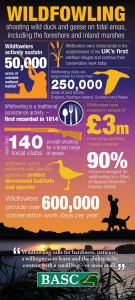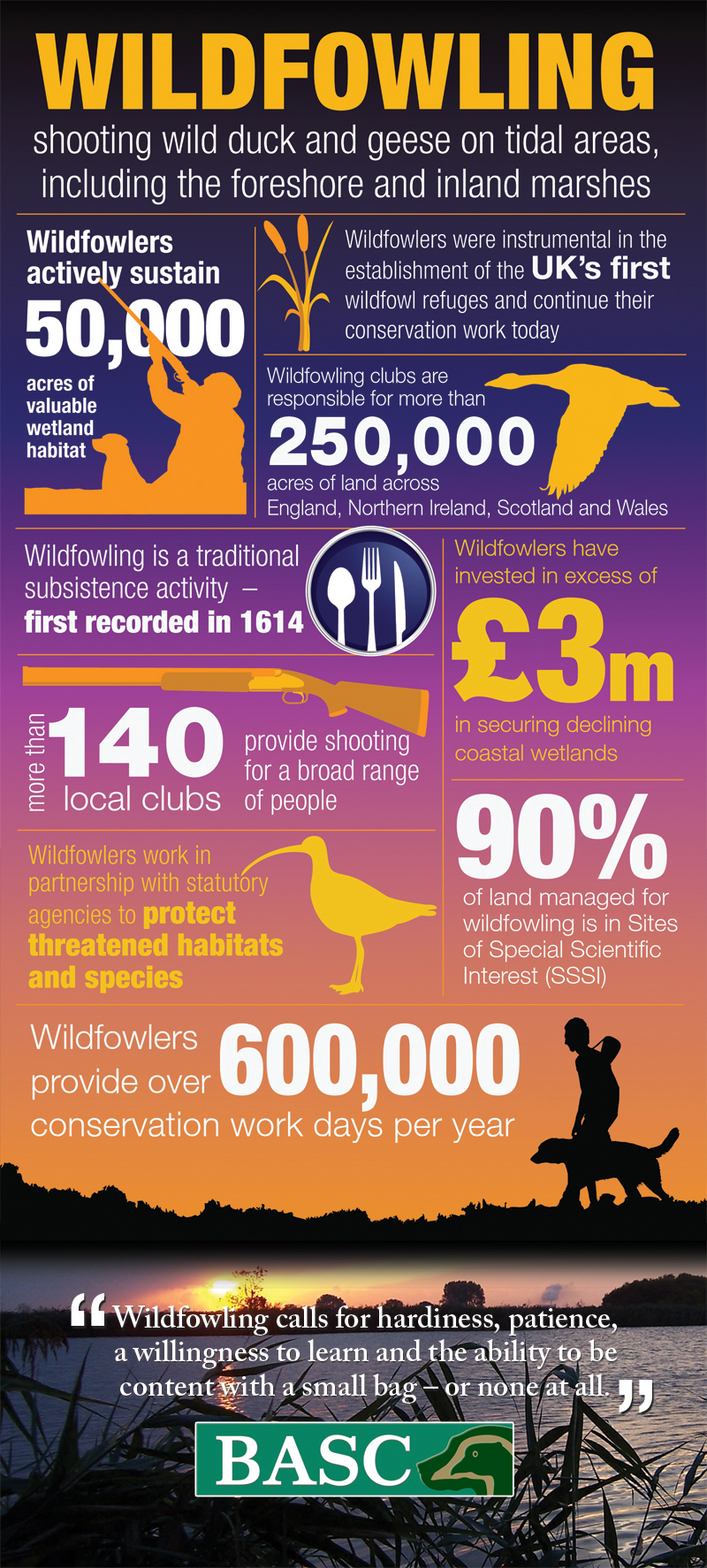
The value of wildfowling and the positive conservation benefits it brings are highlighted in an infographic produced and published by the British Association for Shooting and Conservation (BASC).
The infographic will be sent to MPs in coastal constituencies where wildfowling takes place.
The infographic has been added to BASC’s growing suite of information resources which help to deliver key facts and messages in a clear and concise format.
It highlights that wildfowlers actively sustain 50,000 acres of valuable wetland habitat and that wildfowling clubs are responsible for more than 250,000 acres of land around the UK. Ninety per cent of land managed for wildfowling is in Sites of Special Scientific Interest (SSSI) and wildfowlers provide over 600,000 conservation work days per year.
The infographic points out that wildfowlers were instrumental in the establishment of the UK’s first wildfowl refuges and continue their conservation work today. Wildfowlers work in partnership with statutory agencies to protect threatened habitats and species.
BASC chairman Alan Jarrett said: “The benefits of wildfowling and the conservation work which the clubs put in are well known in the shooting world. We want to make sure they are well known by politicians and policy makers. This infographic will help us get our message across.”
BASC’s director of conservation, Tim Russell, said: “The network of more than 140 wildfowling clubs around the country, supported by our specialist teams here at BASC, undertake very important work in managing and maintaining valuable habitats. Wildfowling is often a solitary pursuit. It is time the message of the good which it does was heard by a wider audience.”
ENDS
Notes to editors: Wildfowling is the hunting of wild ducks and geese over coastal areas below the high water mark, inland marshes and wetlands.
